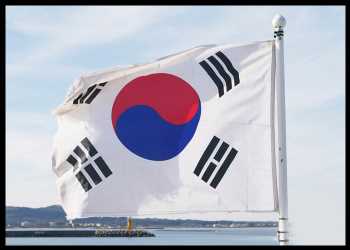South Korea’s consumer price inflation eased further in February to the lowest level in nearly a year amid a slowdown in rental and oil prices, giving relief to the Bank of Korea to go ahead with its wait-and-watch policy stance, figures from Statistics Korea showed on Monday.
The consumer price index rose 4.8 percent year-over-year in February, slower than the 5.2 percent rise in the previous month. Economists had expected inflation to moderate to 5.05 percent.
Further, the latest inflation rate was the lowest since April 2022, when prices had risen the same 4.8 percent.
The inflation rate also came below 5.0 percent for the first time in 10 months, but well above the central bank’s medium term inflation target of 2.0 percent.
Core inflation that excludes food and energy edged down to 4.0 percent in February from 4.1 percent in January.
Utility costs that includes housing, water, electricity, gas and other fuels had the largest impact on the overall inflation in February. They rose 7.7 percent annually.
Prices for food and non-alcoholic beverages grew 5.8 percent, and those for restaurants and hotels surged 7.4 percent.
Costs for miscellaneous goods and services were 6.9 percent more expensive compared to last year. Transport charges rose only 0.4 percent.
Consumer prices increased 0.2 percent on a monthly basis in February versus a 0.8 percent gain seen at the start of the year.
The core CPI also moved up 0.3 percent from the previous month following a 0.6 percent rise in January.
The Bank of Korea halted the 18-month long tightening cycle in February by leaving the key interest rate unchanged at 3.50 percent.
The central bank has hiked its policy rate by a total 300 basis points since August 2021. The rate is now at its highest level since 2008.
BoK Governor Rhee Chang-yong said the pause did not mean an end to tightening but only some time to assess the impact of past hikes.
“If inflation slows to around 3 percent by the end of the second quarter, the BoK will begin adjusting its policy stance toward easing and eventually deliver a rate cut in the fourth quarter,” ING economist Min Joo Kang said.
“We revised our BoK outlook last week, delaying the 25bp rate cut to the fourth quarter, as the Federal Reserve’s terminal rate is set to rise to 5.5 percent.”
The economist also observed that while the geopolitical situation and the reopening of China have contributed to high uncertainty around commodity prices, it is likely that the Bank of Korea will maintain its hawkish stance through out this year.
Source: Read Full Article

